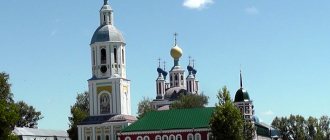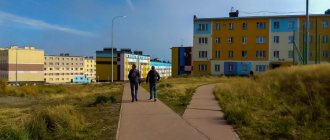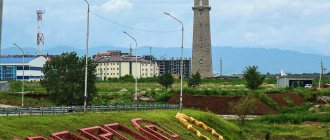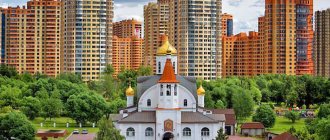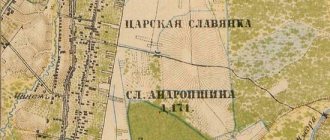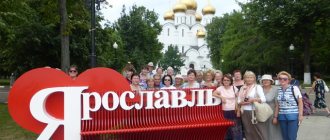Derbent is located on the territory of modern Dagestan. The earliest mention of the settlement dates back to the 6th century BC. The author of such a “memoir” is an ancient Greek geographer named Hecataeus of Miletus. Archaeological excavations have brought evidence that the city is at least 5,000 years old, making it one of the oldest cities in the world.
Derbent is called differently. Some people like to repeat that this is “the most ancient city in Russia”, others emphasize that this is a city-“open-air museum”, the Arabs - the founders of the oldest districts of the city called it “Bab al-Abwab” (“gate of gate", "main gate"). The city is now filled with a huge number of museums. In Derbent, it is believed that more than half of the city is a museum-reserve, in which there is a whole complex of stone structures, many buildings dating back to the sixth century BC. The complex includes a fortress called Naryn-kala. It used to serve as a defensive checkpoint for many centuries; few fortresses can boast of the length of history that this post has. The mosque, which is located on the territory of the complex, deserves special attention. It is called the Juma Mosque.
It was built back in the eighth century BC. Juma is the oldest mosque in Russia. The temple was taken over by the Arabs, who converted it into a mosque. But the temple was built long before the first Arabs appeared in Derbent. Therefore, the entrance to the mosque is not from the north, as it should be, but from the south. In front of the mosque is a 15th-century madrasah.
Derbent stands on the shores of the Caspian Sea, on a narrow strip up to 3 km wide between water and mountains. Once upon a time (even when there was no city here), this strip of land was a caravan road from Europe to Asia and was called the Caspian Passage. Whoever tried to seize this passage, and as a result, the landowners who lived in these places, unable to calm down the inhabitants of the steppes, decided to block the Caspian passage.
So, in the 6th century AD. a whole defensive complex appeared here, completely blocking the entire passage. These fortifications began with a citadel located on the top of a hill (where it still stands to this day), and stretched along two parallel walls that went down and closed far into the sea (now only fragments of these walls have survived). Since then, Derbent was completely protected from any attacks, and in 1813 the city, along with the rest of Dagestan, became part of the Russian Empire.
Magali
Magali (translated from Arabic as “neighborhoods”) is the area from which the history of Derbent as a city began. The oldest urban area. Magals are located directly under the Naryn-Kala citadel, in the upper western part of the city and are neighborhoods with one-story stone buildings. There are no apartment buildings here.
There are 9 mahals in total. The highest one is located, right under the fortress. This part of the city is quite unique. Magals give the city an oriental flavor, reminiscent of Derbent’s special past. One-story houses stuck to each other, leaving almost no space for passage. The streets here are narrow and crooked. Just like some ancient Baghdad.
Over the long history of the city, the mahals have changed little. Tall mansions have just appeared in some places, and even billboards on the walls of houses make you remember that you are not in a medieval eastern city, but in modern Derbent. Most of the city's mosques are located here.
DERBENT
DERBENT, the southernmost city of Russia, in the southeast of Dagestan, the center of the Derbent region, forms an urban district. Population 124.7 thousand people (2019). Located on the spurs of the Tabasaran Mountains of the Greater Caucasus (they form the Derbent Passage, or Caspian Gate, on the coast of the Caspian Sea - in ancient times the most important convenient route connecting the North Caucasus with Transcaucasia and other regions of Asia), near the mouth of the river. Samur. Railroad station. The federal highway "Caucasus" passes through Derbent.
Story
The modern name of the city appeared in Iranian sources in the 6th century. (in medieval Arabic sources it was called Bab al-Abwab, in Turkic sources - Temir-Kapy, in Russian - Derben, or Iron Gate). The geopolitical location predetermined the special significance of Derbent in antiquity and the Middle Ages. Connected with this is the special significance of the materials obtained during its archaeological study (with interruptions since 1926; cultural layer up to 11 m).
The earliest settlement on the territory of Derbent (in the northeastern part of the Naryn-Kala fortress) dates back to the 3rd millennium BC. e. (tour-beam buildings are round in plan; among the finds are clay female figurines, etc.). A new settlement on this site (area 4–5 hectares) arose at the beginning of the 1st millennium BC. e.; at the turn of the 8th–7th centuries. BC e. surrounded by stone walls (presumably in connection with the Scythian campaigns through the Derbent Passage). During the Albanian-Sarmatian period (3rd century BC – 4th century AD; in the 1st–4th centuries AD, the city was part of Caucasian Albania), more advanced fortifications with towers were built. 7th century settlement BC e. – 4th century n. e. It was built up with stone and turbecular buildings (Early Scythian and Sarmatian arrowheads were found, traces of destruction and fire of the late 1st century BC or the beginning of the 1st century AD were found). About the prosperity of the city in the 1st–3rd centuries. n. e. evidenced by multi-room buildings in the fortress and buildings outside it, Middle Eastern glassware, imported Parthian, Transcaucasian and Greek. ceramics, female ivory figurines. In 252–253, Shah Shapur III of the Sassanid dynasty of Persia destroyed the city. To the south of the fortress, a burial ground has been studied (burials from the 10th–8th centuries BC; 2nd century BC – 2nd century AD and early Muslim times); among the finds is a rich male burial with part of a horse skeleton , a dog skull, 5 human skulls and a woman’s burial (1st–2nd centuries). A burial ground dating from the 2nd–4th centuries was discovered near the western wall of the fortress.
In the 4th–7th centuries. Derbent is one of the centers of the spread of Zoroastrianism in the Caucasus. In the 2nd quarter. 5th century A wall was built from mud bricks, leading to the sea, located 3.5 km from the city. In the middle is the 2nd floor. 6th century During the reign of Khosrow I Anushirvan, Derbent became the residence of the governors of the Persian shahs, the military-political and cultural center of the periphery of the Sasanian state. During this period, a new complex of buildings was erected. The fortress was rebuilt in stone, to the west of it a Mountain Wall (Dag-bars) was erected with a system of forts (length about 45 km), to the east - two parallel walls extending into the sea (each length is over 3.5 km, height – up to 12–15 m). On both sides they bounded an area of approx. 150 hectares - shakhristan (“suburb”, area 26–27 hectares) and rabad (“posad”) separated from it by a third wall, as well as a harbor where the walls went into the sea and served as a jetty. The southern gates of Bayat-Kapy, Orta-Kapy, Dubary-Kapy, the northern gates of Kirkhlyar-Kapy, Jarchi-Kapy have been preserved. In the eastern part of the fortress, the remains of a palace with a columned hall (6th–10th centuries) have been studied. Some scholars suggest that under the Sassanids a Christian church (basilica) was built in Derbent. The remains of another church (cross-domed) from this time have been discovered in the fortress. Pahlavi building inscriptions have been discovered.
In the 630s, taking advantage of the weakening of the Sassanid state in the fight against Byzantium, Derbent was captured by nomads. However, already in 652 it was occupied by the Arabs, who rebuilt the fortress in 733/734. From the 8th century - residence of the caliph's governors. In the 1st half. 8th century The production of glazed ceramics began in Derbent. In the 10th–11th centuries, after the collapse of the Caliphate, Derbent was the center of the independent Derbent Emirate. In 1071 it was captured by the Seljuk Turks, in the 12th–13th centuries. was part of the Pahlavanid state. In the 10th–12th centuries. The Derbent fortress was rebuilt several times and fortified with towers. In the northwestern part of the fortress, 2 palace complexes were studied; in Shakhristan - ceramic workshops and glass melting furnaces 10 - mid. 13th centuries; near the northern wall is the Muslim cult complex “Doomsday Gate” (9th–14th centuries), including the burial ground of 40 Seljuk martyrs (11th–12th centuries).
In the 11th–12th centuries. Derbent is a large cultural center. The Muslim chronicles of Derbent were compiled here: “Tarikh Bab al-Abwab wa Shirvan” by Mammus al-Lakzi, “Derbend-name” by Yusuf al-Babi (the work was revised in the early 18th century by Muhammad Awabi from Endirey), the Sufi encyclopedia of Darbandi.
In 1239 Derbent was subjected to Mongol conquest, but was not destroyed. In the 13th–14th centuries. Derbent was claimed by the rulers of the Golden Horde and the Hulaguides. In 1395 the city was taken by Timur's troops. In the end 14th – 15th centuries The fortress walls were rebuilt. In the 2nd third 15 – beginning. 16th centuries Derbent was part of the state of Shirvan.
In the beginning. 16th century the city was the subject of a dispute between the Ottoman Empire and Persia. In 1509, the Persian Shah Ismail I took Derbent and resettled part of the Persian Bayat tribe to the city. At 16 – start. 18th centuries as part of Persia (in 1578–1606 as part of the Ottoman Empire). In the beginning. 17th century Shah Abbas I restored the fortifications of the city and port of Derbent, turning it into a stronghold of Persia in the Caucasus. During the Persian campaign of 1722–23, Russian troops occupied Derbent, but according to the Ganja Treaty of 1735 the city was again transferred to Persia. In 1747–59, 1796–97, 1800–03 Derbent was the capital of the Derbent Khanate. During the Persian campaign of 1796 it was occupied and then abandoned by Russian troops, again occupied in 1806 during the Russian-Persian war of 1804–13. The inclusion of Derbent into Russia was secured by the Treaty of Gulistan in 1813. In 1840–46 it was a district city in the Caspian region, in 1846–60 it was the center of the Derbent province, in 1860–83 it was the center of the city government in the Dagestan region. Since the 1840s experienced rapid economic growth, associated, in particular, with the development of madder farming (growing madder, a plant from which a cheap dye is obtained). In 1898–99, the Petrovsk-Port–Baku railway passed through Derbent. During the Civil War of 1917–22, Derbent repeatedly passed to different warring parties: in October 1917, Soviet power was established in it, from December 31, 1917 (January 13, 1918) the city was under the control of the Terek-Dagestan government, in January 1918 it was occupied by the troops of N. Gotsinsky, in April - by detachments of the Baku Commune, in August - by detachments of L.F. Bicherakhov (see Bicherakhovs), in October 1918 - by Turkish troops, who transferred power in the city to the Mountain Government, in May 1919 by units of the Armed Forces of the South of Russia, 25.3.1920 - parts of the Red Army. In 1921–91 the regional center of the Dagestan Autonomous Soviet Socialist Republic, from 1991 - the Republic of Dagestan. Historical city of Russia (since 1990). Since 2002 it has been a city of republican significance.
Architecture
Derbent. Gate of Orta-Kapa. Photo by P. S. Pavlinov
The upper, old part of Derbent, adjacent to the fortress, is an intricate network of narrow crooked streets with 1-2-story houses, mosques, water fountains, and baths. The lower part (Dubary) was built according to the general plan of 1824 and consists of rectangular blocks and straight wide streets (among the buildings is a passage, a railway station, late 19th century). The complex of the cathedral Juma Mosque includes the mosque itself [8th century; 3-nave hall with arcades, covered with vaults (restored in the 14th century); square hall with a pointed dome], madrasah (15th–19th centuries) and arched gate (17th–19th centuries). Dr. mosques: Kyrkhlyar (17th century, over the central part there is a pointed dome), Minaret (18th century, partially rebuilt in the 19th century) with the only round minaret in Derbent (14th century; dilapidated), Chertebe from the wood. carved decoration (18th–19th centuries), Kilsa, Balla. The Khan's Mausoleum (1787–88) is an octagonal building with a pointed dome, located near the Kirkhlyar cemetery. The baths, almost 2/3 buried in the ground, are covered with vaults and domes (17th–18th centuries); underground water cisterns (8th–17th centuries); remains of a caravanserai (17th–18th centuries). The fortress preserves: the ruins of the Khan's palace (2nd half of the 18th century), a guardhouse in the classicist style (1828). South cemetery with characteristic dag. gravestones. The historical center of Derbent with the fortress and the Old Town area is included in the World Heritage List.
Derbent. Southern Cemetery. Photo by P. S. Pavlinov
Derbent was reconstructed according to the general plan of 1955. Monuments: to the fighters for Soviet power in Dagestan (sculptor G. Geibatov, architect V. Skugarev), S. M. Kirov (1938, architect I. Oleinikov), heroes of the Great Patriotic War (1985, S. Ya Yagudaev, S. Khizgilov). Arabic, Middle and New Persian inscriptions from the 4th to 19th centuries have survived in Derbent and its environs. (their study has been carried out since 1722).
Centers of science and culture
Branches of universities, including Dagestan State Pedagogical University and Dagestan State University. Historical, architectural and art museum-reserve "Ancient Derbent" (1988) with branches: culture and life of ancient Derbent, carpet and decorative arts (Derbent is an ancient center of carpet weaving), art gallery, house of A. A. Bestuzhev (Marlinsky) . Museum of Military Glory (1991). Theatres: Azerbaijan Drama Theater (1930), Lezgin Musical and Drama Theater named after. S. Stalsky (1938), Tabasaran Drama Theater (2001), Tat People's Theater (1962).
Farm
One of the industrial centers of Dagestan. Mechanical engineering enterprises (Derbent Grinding Machine Plant, Elektrosignal - electronic equipment, Volna Research Institute - aviation equipment, video surveillance systems, communication and switching equipment, etc., Radioelement - electronic devices and components), food and flavoring industries (including a cognac factory, a sparkling wine factory, a juice factory), for the production of building materials, etc.
Unique experience of municipal strategy
The head of the Department of Architecture and Urban Planning of Derbent, Isa Magomedov, told Expert YUG about the stages of developing a plan for the comprehensive development of the city.
“Plans to develop a program for the comprehensive development of Derbent appeared two years ago, when the city’s leadership changed,” says Isa Magomedov. — The working team then had two paths - conservative and breakthrough. In the first case, we would simply make changes to existing territorial planning documents. In the second case, it was about developing a completely new strategy. We chose the second option. The administration announced a competition to develop a master plan for the development of Derbent. As a result, the consortium led by the Novaya Zemlya company won.”
As a result, the municipality and government adopted a comprehensive development program. It is implemented with the involvement of tax deductions from the local budget in a special direction.
“The adoption of a city development strategy at the local level and its implementation with the help of tax deductions within the framework of a state program is a unique case. This experience interested the government of the Russian Federation. Members of the Cabinet of Ministers came to Derbent, and in April of this year, Prime Minister Mikhail Mishustin visited here and was presented with a comprehensive development plan. Mishustin supported the local initiative, and later, together with the government of the Russian Federation and the responsible ministries, the plan was brought to specific figures - deadlines and amounts,” explains Isa Magomedov.
The Republic received a new impetus for development, and Derbent received new prospects
“True, there is a chance only if they do it well right away - for example, following the Turkish model, that is, giving large plots to investors on the terms of comprehensive development. If they rely on small businesses and tourist centers, the desired effect will not be achieved. The entire strip of southern resorts should implement world-class projects. All territories here need to be raised to a high level,” says Alexey Krylovsky.
According to Isa Magomedov, investors have already been found who are ready to implement projects in this territory: “Of course, there are already investors who are ready to invest in the development of Derbent. Thus, the new microdistrict “Yuzhny” falls into their area of interest, where it is planned to create sites for business. This area will become a new social and business center. Even the city administration is supposed to be moved there. A large religious complex will also be built here - a modern mosque, temple and synagogue. Since Derbent is a city of three religions, religious buildings will be united by public space. The master plan also includes work in the Avaim microdistrict. Now this is a depressed area on the map of the municipality. There is a huge quarry here, which is planned to be converted into a park and residential development created here.”
Also, the head of the Department of Architecture and Urban Planning identified an important problem point. In his opinion, the primary task is to provide the city with communications, clean up wastewater into the sea, and generally establish a water supply.
“The main problem in implementing the development project is the poorly developed communication infrastructure. In Derbent, the situation with water pipelines and sewerage is unfavorable. And if residential or social facilities can be built in a short time, providing the entire city with the necessary communications is a long and costly process. The master plan includes a project for the reconstruction of treatment facilities, the construction of water pipelines and other facilities. It is necessary to complete this work so that Derbent becomes a full-fledged resort city,” concluded Isa Magomedov.
Difficulties and prospects for the development of the Caspian Gate
Managing Director, Managing Director of the Leontief Center Consortium - AV Group Alexey Krylovsky believes that investing in Derbent is a promising direction. According to an expert who previously developed a development strategy for Dagestan, Derbent is of strategic importance not only as a resort city, but also as an important logistics city.
The development of tourism is also a good solution for this zone, the expert believes. The coastal strip of the republic's territory from Makhachkala to Derbent can attract travelers and increase the tourist flow four to five times.
